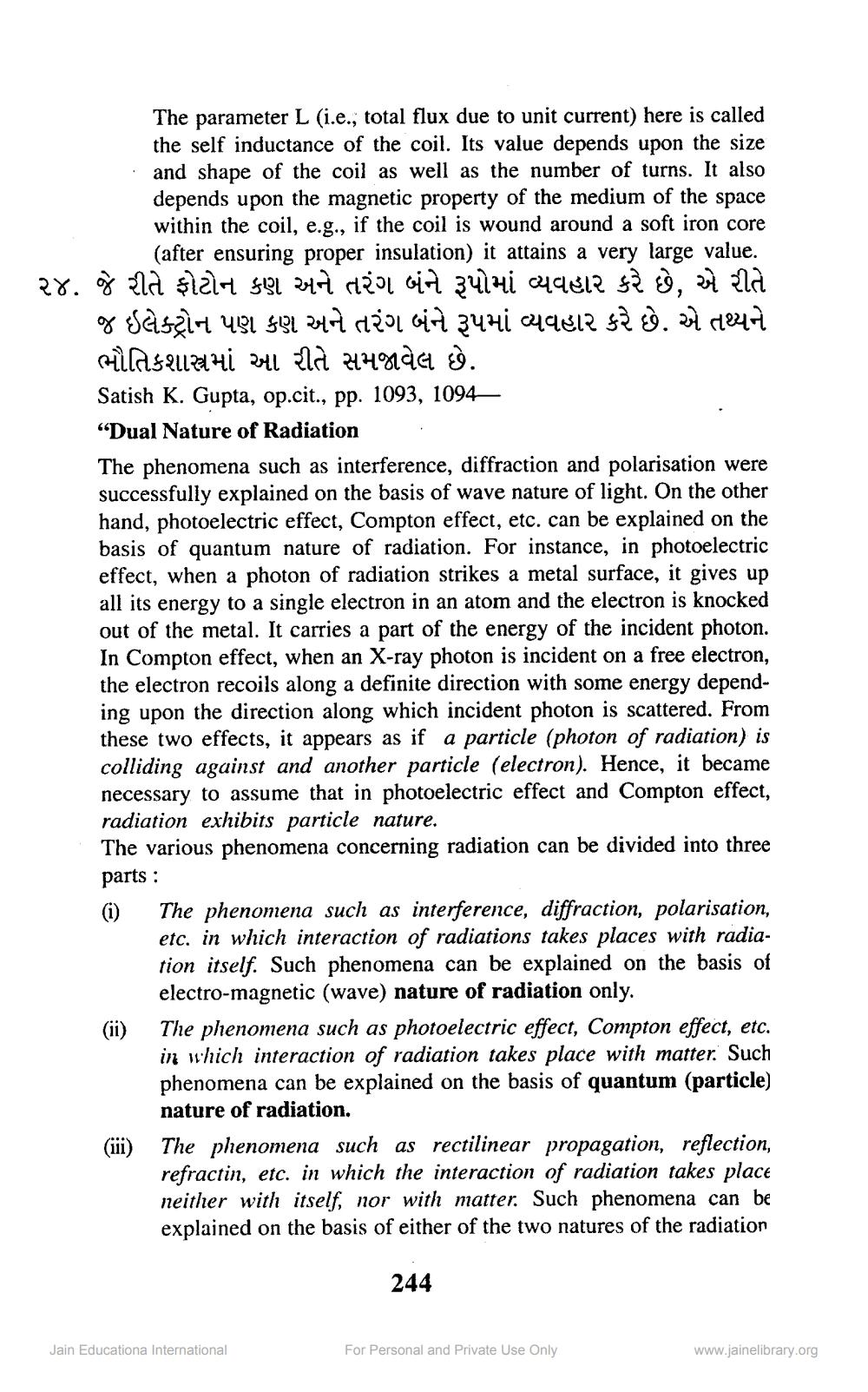________________
The parameter L (i.e., total flux due to unit current) here is called the self inductance of the coil. Its value depends upon the size and shape of the coil as well as the number of turns. It also depends upon the magnetic property of the medium of the space within the coil, e.g., if the coil is wound around a soft iron core
(after ensuring proper insulation) it attains a very large value. ૨૪. જે રીતે ફોટોન કણ અને તરંગ બંને રૂપોમાં વ્યવહાર કરે છે, એ રીતે
જ ઇલેક્ટ્રોન પણ કણ અને તરંગ બંને રૂપમાં વ્યવહાર કરે છે. એ તથ્યને ભૌતિકશાસ્ત્રમાં આ રીતે સમજાવેલ છે. Satish K. Gupta, op.cit., pp. 1093, 1094 “Dual Nature of Radiation The phenomena such as interference, diffraction and polarisation were successfully explained on the basis of wave nature of light. On the other hand, photoelectric effect, Compton effect, etc. can be explained on the basis of quantum nature of radiation. For instance, in photoelectric effect, when a photon of radiation strikes a metal surface, it gives up all its energy to a single electron in an atom and the electron is knocked out of the metal. It carries a part of the energy of the incident photon. In Compton effect, when an X-ray photon is incident on a free electron, the electron recoils along a definite direction with some energy depending upon the direction along which incident photon is scattered. From these two effects, it appears as if a particle (photon of radiation) is colliding against and another particle (electron). Hence, it became necessary to assume that in photoelectric effect and Compton effect, radiation exhibits particle nature. The various phenomena concerning radiation can be divided into three parts : (i) The phenomena such as interference, diffraction, polarisation,
etc. in which interaction of radiations takes places with radiation itself. Such phenomena can be explained on the basis of electro-magnetic (wave) nature of radiation only. The phenomena such as photoelectric effect, Compton effect, etc. in which interaction of radiation takes place with matter. Such phenomena can be explained on the basis of quantum (particle)
nature of radiation. (ii) The phenomena such as rectilinear propagation, reflection,
refractin. etc. in which the interaction of radiation takes place neither with itself, nor with matter. Such phenomena can be explained on the basis of either of the two natures of the radiation
(ii)
244
Jain Educationa International
For Personal and Private Use Only
www.jainelibrary.org




